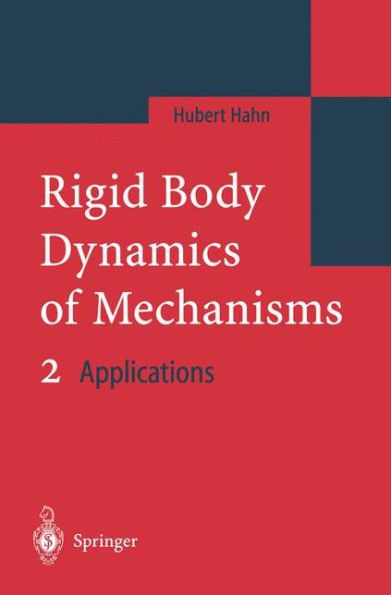The dynamics of mechanical rigid-body systems is a highly developed disci pline. The model equations that apply to the tremendous variety of applications of rigid-body systems in industrial practice are based on just a few basic laws of, for example, Newton, Euler, or Lagrange. These basic laws can be written in an extreme compact, symmetrical, and esthetic form, simple enough to be easily learned and kept in mind by students and engineers not only from the area of mechanics, but also from other disciplines like physics, mathematics, or even control, hydraulics, and electronics. This latter aspect is of immense practical importance since mechanisms, machines, robots, and ve hicles in modern industrial practice (sometimes called mechatronic systems) usually include various subsystems from the areas of hydraulics, electronics, pneumatics, and control and are built by engineers which are trained in quite different disciplines. Objectives of this monograph This Volume presents a systematic approach for deriving model equations of many planar and spatial mechanisms: 1. As a first step in DAE form along the systematic approach of Volume I. 2. As a second step in symbolic DE form, as nonlinear and linear state-space equations, andin transfer-function form. The objectives of both the theoretical discussions (Volume I) and the practical applications (this volume) are (see Table 1. 1 of Chapter 1, Volume I): 1. To prepare the reader for efficiently handling and applications of generalpurpose rigid-body programs to complex mechanisms.
1101509964
Rigid Body Dynamics of Mechanisms 2: Applications
The dynamics of mechanical rigid-body systems is a highly developed disci pline. The model equations that apply to the tremendous variety of applications of rigid-body systems in industrial practice are based on just a few basic laws of, for example, Newton, Euler, or Lagrange. These basic laws can be written in an extreme compact, symmetrical, and esthetic form, simple enough to be easily learned and kept in mind by students and engineers not only from the area of mechanics, but also from other disciplines like physics, mathematics, or even control, hydraulics, and electronics. This latter aspect is of immense practical importance since mechanisms, machines, robots, and ve hicles in modern industrial practice (sometimes called mechatronic systems) usually include various subsystems from the areas of hydraulics, electronics, pneumatics, and control and are built by engineers which are trained in quite different disciplines. Objectives of this monograph This Volume presents a systematic approach for deriving model equations of many planar and spatial mechanisms: 1. As a first step in DAE form along the systematic approach of Volume I. 2. As a second step in symbolic DE form, as nonlinear and linear state-space equations, andin transfer-function form. The objectives of both the theoretical discussions (Volume I) and the practical applications (this volume) are (see Table 1. 1 of Chapter 1, Volume I): 1. To prepare the reader for efficiently handling and applications of generalpurpose rigid-body programs to complex mechanisms.
379.99
In Stock
5
1

Rigid Body Dynamics of Mechanisms 2: Applications
665
Rigid Body Dynamics of Mechanisms 2: Applications
665Paperback(Softcover reprint of hardcover 1st ed. 2003)
$379.99
379.99
In Stock

Product Details
| ISBN-13: | 9783642056956 |
|---|---|
| Publisher: | Springer Berlin Heidelberg |
| Publication date: | 12/07/2010 |
| Edition description: | Softcover reprint of hardcover 1st ed. 2003 |
| Pages: | 665 |
| Product dimensions: | 6.10(w) x 9.25(h) x 0.24(d) |
From the B&N Reads Blog
